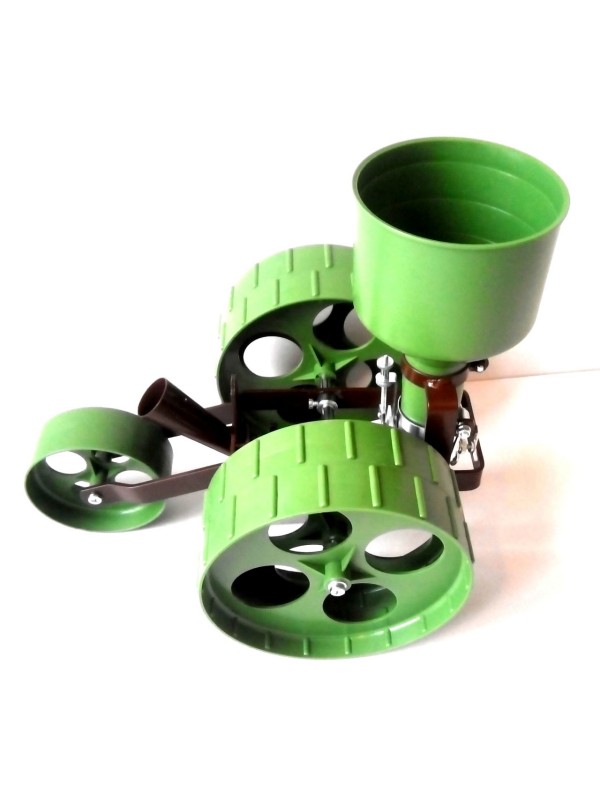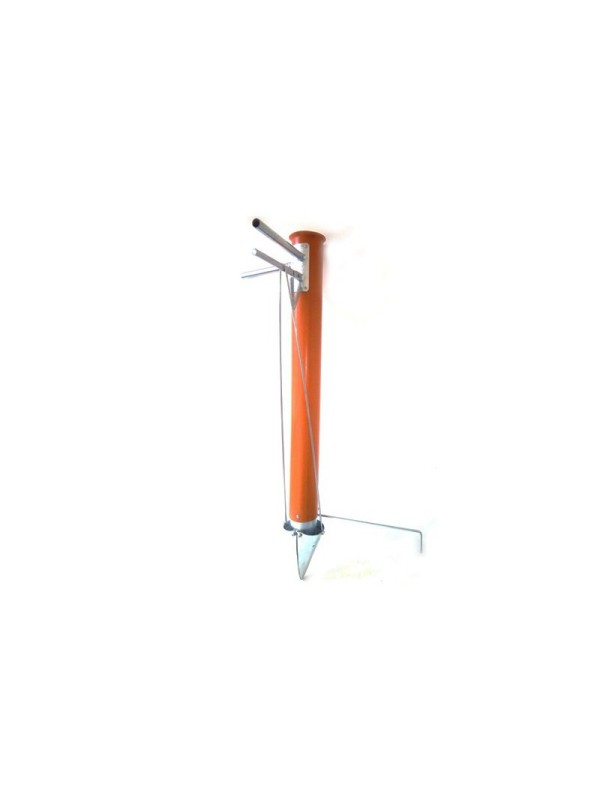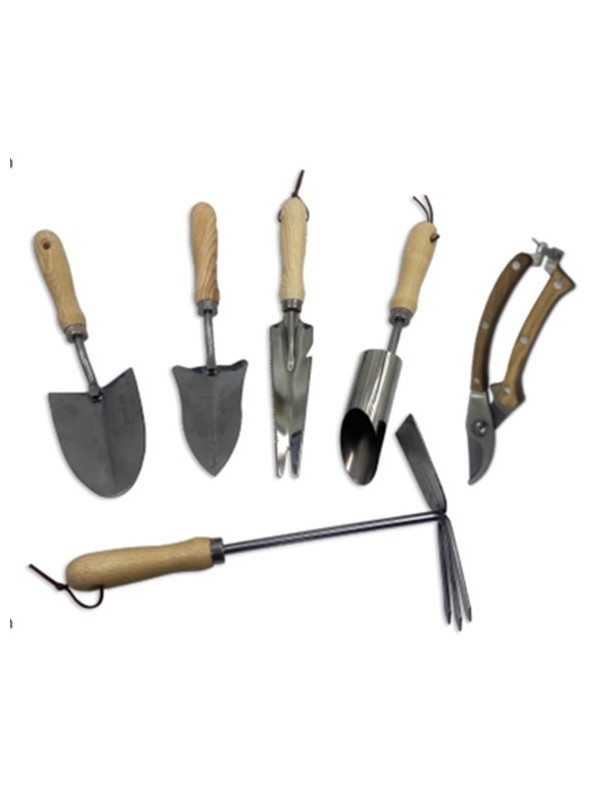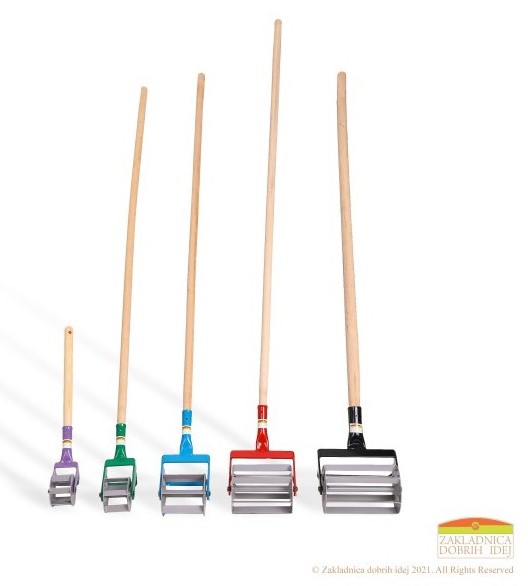Spring Garden preparations
It is that time of the year again when the ground is beginning to warm, the trees bud, and the birds start chirping. And that also means it is a perfect time we start preparing our gardens for this year’s upcoming harvest. But before we even begin putting plants and bulbs in the soil, we need to make sure, the grounds are well prepared. Here are some tips to help you prepare for a successful growing season.
- Order bulbs and seeds
Before the warm weather even starts you can take your time to think about which plants will grow best in your garden, regarding the sunlight your garden receives and which ones you want to grow. Then you can go to local stores and purchase or order the seeds and bulb online. Source quality seeds from local seed growers. If you’ve been into planting for many years yourself, you probably have some of your seeds. In that case, it is crucial to check the amounts as well as to examine the condition of the seeds. If they are moldy, eaten, or in any way bad, they won't do you good this year and it is time to purchase some new ones.
- Create a planting calendar or buy one in store
Before you start planting you should know that a vegetable garden requires regular work of watering, weeding, and harvesting. You should carefully choose which plants you want to grow if you won’t be able to maintain them full-time or if you don’t have anyone to water them when you will be out of town. And the other thing about gardening is that every plant has a different germination time, so you will need to make a planting calendar or buy it from some agricultural cooperative. It will help you determine the maturity dates and will also give you space to take notes about diseases and harvests.
- Clear out weeds and debris
As we do a spring cleaning in the house you should also do a spring cleaning of your garden. Remove anything that is in the way like leaves, fallen branches, and weeds. Dead organic matter can go to the compost to break down, as we can use it later in autumn to prepare the garden for colder months. Any live weeds should be burned or recycled in brown bins, but don’t discard them on compost as they will germinate and cause you problems later on. If the soil is still wet from the winter, you should wait until it is dry enough before attempting weeding or tilling. Working when the soil is wet can damage its structure.
- Clean and wash greenhouse
If you own a greenhouse now will be a great time to give it a deep clean. Start by checking if there is any damage and repair that first. Then you can get to washing the outside by just using water. You can also use a natural disinfectant or detergent to remove algae, moss, and general grime. By washing the outside it will let more light through. While cleaning the outer part is important, more important is cleaning the inner parts as some pests and diseases can survive winter in the smallest nooks and crannies. Don’t forget to ventilate after you washed it to dry it thoroughly.
- Clean and sharpen gardening tools
In this blog, it is mostly talked about cleaning and preparing, but that is what it takes to prepare the garden for spring and sowing. One of the things you should clean is also tools. It is advisable that you clean and store the tools properly in late autumn, but is important to check them again in spring. By keeping a good eye on the tools you will longer their life, which will save you money in the long run and will help you prevent diseases and spreading germs. The most efficient way to clean garden tools is by using hot water and scrubbing them with a scourer or stiff brush to remove any hardened soil. Pay particular attention to any rusty parts.
Besides cleaning it is recommended to sharpen your tools and oil them with some natural oil. Sharpening is important as it will be easier to work with and will give them cleaner pruning cuts.
If you think your tools are too rusty and ready to be replaced or you just want a fresh set, we offer you small sets of tools, where every tool can be purchased individually. This set is suitable for vegetable and flower gardens and even for those living in complex buildings as the set is so small you can store it anywhere.
- Install water butts and start collecting rain water
Even though watering and summer drought might seem far away, it is best if you are prepared in advance. Install a water butt and start collecting rainwater as most of the year’s rain falls in winter. Watering with rainwater is not only best for flowers and vegetables but is also environmentally friendly.
- Create a composting area
If you don’t already have one, consider establishing it for the upcoming season. If you don’t have time to make your compost system using spare wood, you can buy one in any hardware store or agricultural cooperative.
Why even create compost? There are many benefits such as:
- Ameliorates the structure of your soil
- Adds organic matter
- Helps with retaining moisture
- Attracts beneficial organisms
- No need of using pesticides and other harmful fertilizers
- Prevents soil erosion
- Builds resiliency to the impact of climate change
What to put on compost?
You can discard any dead organic matter which will decompose such as grass clippings, vegetable peelings, paper, wood prunings, rotten fruits and vegetables, fallen leaves, etc.
If you want to speed up the process, you can turn the compost each month using garden forks as this keeps it aerated.
- Find a source of mulch and other soil fertilizers
Every soil is a little bit different and has different needs. The easiest way to find out is to purchase a soil test, which you can get at the garden store. The test will show you the pH levels of your soil and knowing that you can adjust it to your needs. To raise the pH level ad wood ash or lime and to lower your pH levels add peat or more compost.
One of the soil fertilizers is manure, which is a great source of nutrients, though it is best applied in the fall. You’ll also want to refrain from sprinkling manure right where you plant lettuce and other leafy greens. But on our website, you can purchase bio stimulator NAUTA, which has a Demeter certificate.
NAUTA is a natural fertilizer with a high content of macroalgae (Ascophyllum nodosum) and plant-derived amino acids, which helps plants in essential aspects: rooting, growth, production, resistance to biotic and abiotic stresses, and fruit set. By applying NAUTA, the plant is stimulated to produce its own hormones, which prepares the plant in advance for stressful situations (drought, frost . . .). This provides advantages such as accelerated growth, rapid seed germination, delayed aging, increased resistance to fungal and bacterial diseases, and adaptation to stress conditions. NAUTA is suitable for all plants throughout the vegetative period, especially from the beginning of growth to flower production and flowering. We recommend using it every 10-14 days.
We offer you a special deal. You can get NAUTA for free by buying our products:
Forks+cultivators =NAUTA 500g FREE
Forks+cultivators+small garden set (6)= NAUTA 1000g FREE
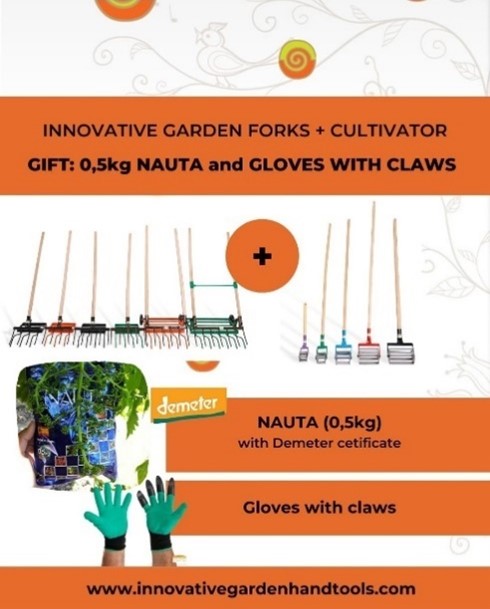
 - copia.jpg)
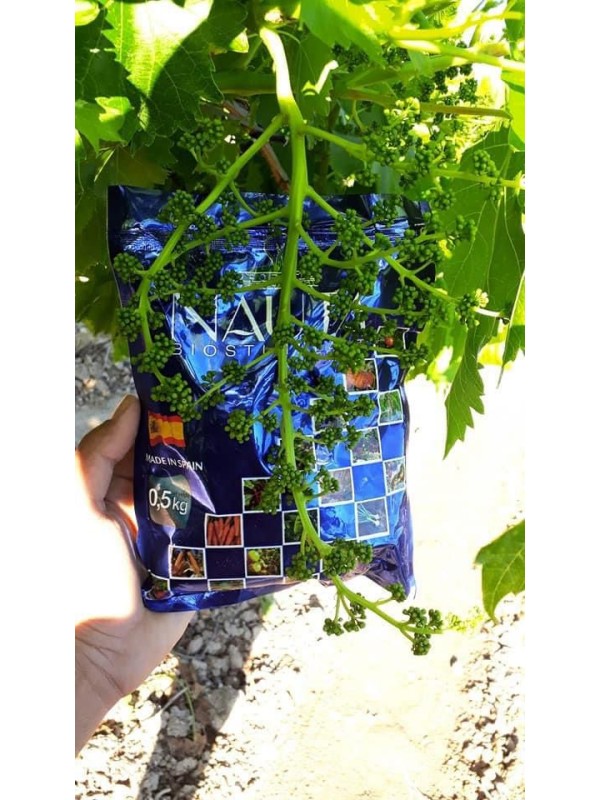
Last but not least when you already planted your seeds or bulbs don’t forget to apply a thick layer of mulch. On our ecological properties, we use as mulch, wool from sheep in the local environment, and wheat or rye straw. You can also use grass clippings, chopped leaves, or wood chips. There are many benefits to using mulch, such as:
- discouraging growth of weeds
- retaining moisture
- adding organic matter and improving soil
- prevent erosion
Just don’t wait too long to mulch the areas, or the weeds will beat you there.
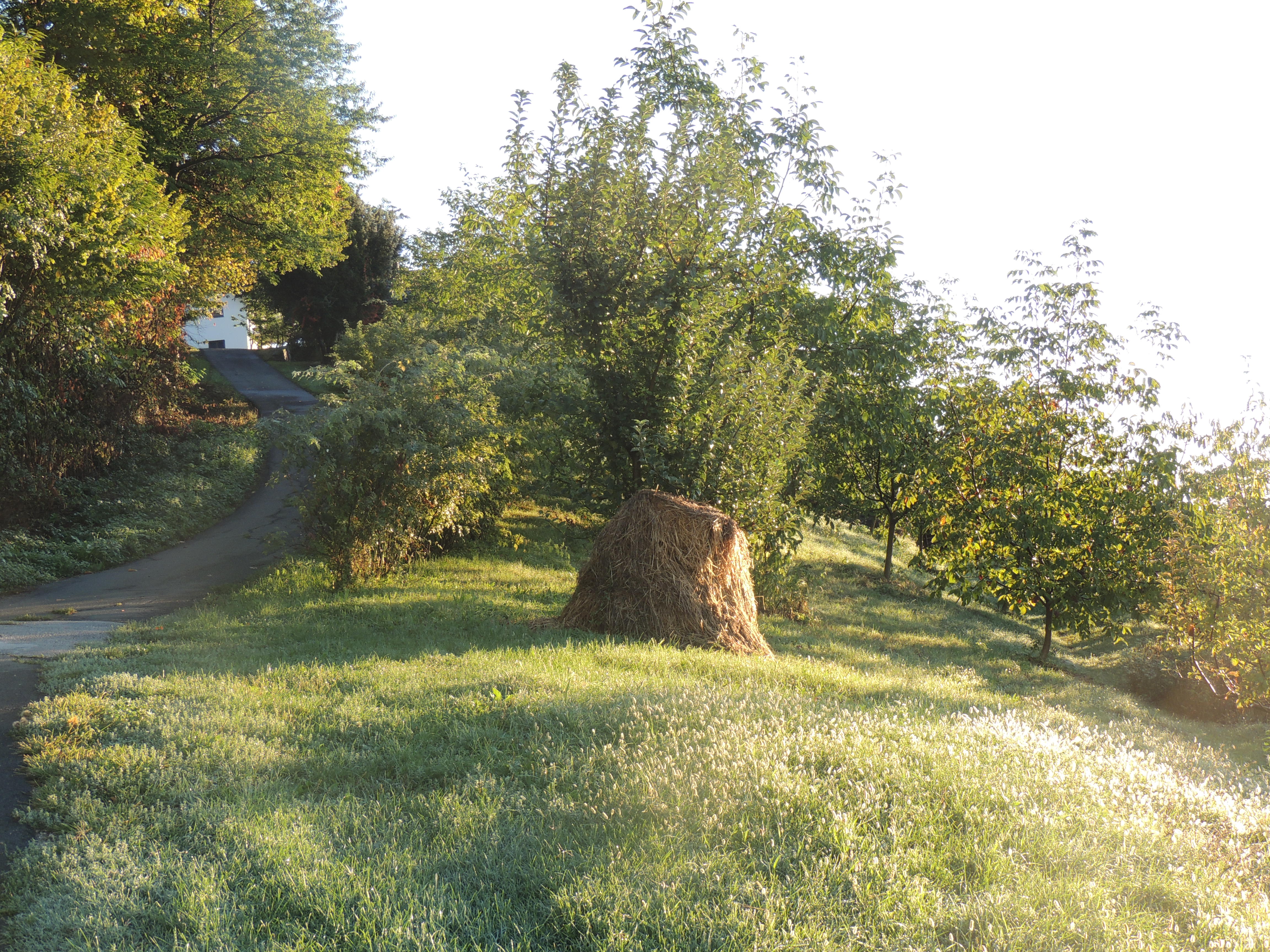
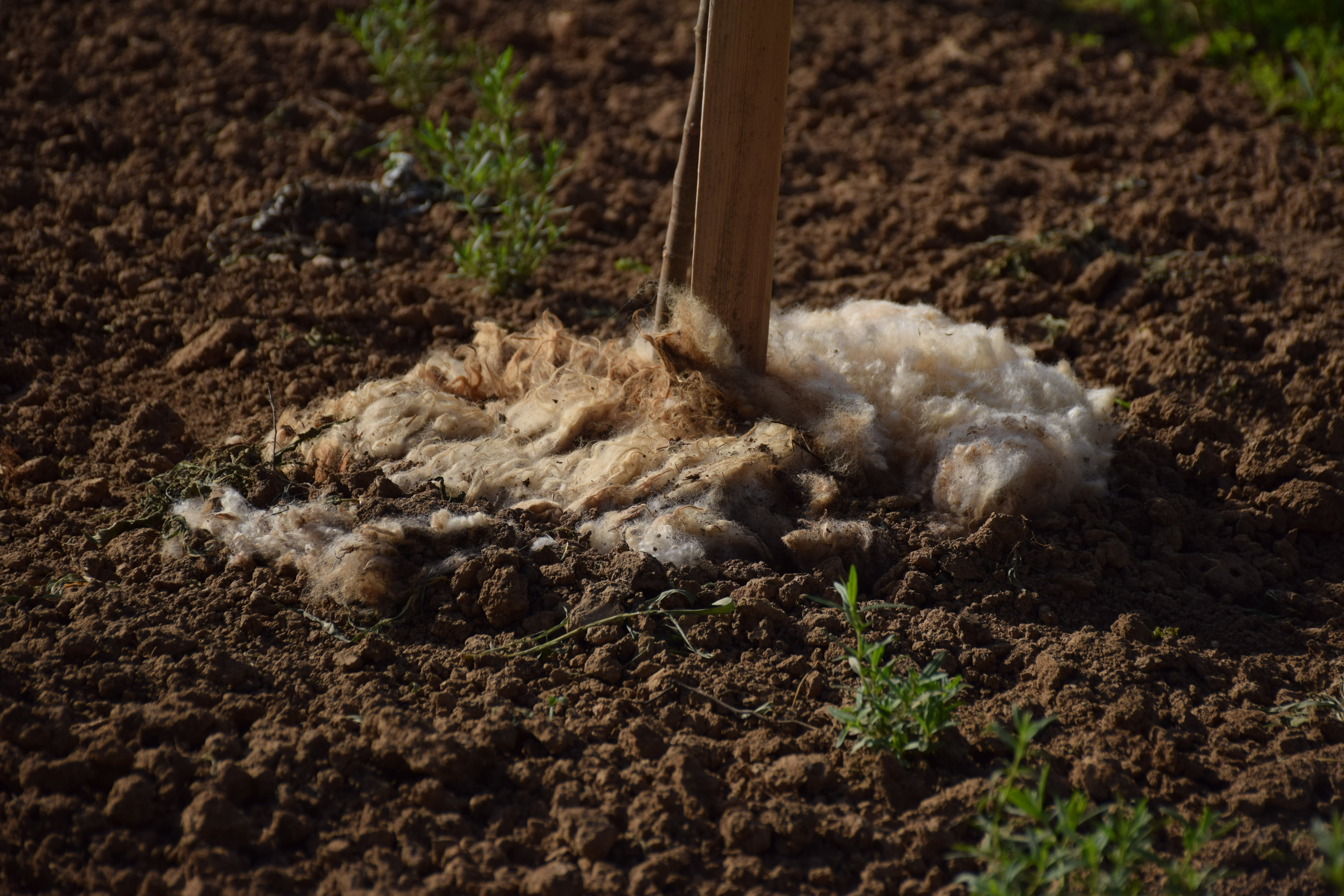
- Aerating with garden forks
Why is it better to aerate the soil with forks rather than just turning it around?
- Advantages of aerating:
- Allows rain to soak deeply into the soil
- Keeping beneficial organisms in the soil
- Easier and faster root growth for better crops
- Allows easier and safer harvest of root crops
With our innovative forks of different widths (30, 40, 50, 60, and 75 cm) you will dig up the soil as well as aerate it at the same time. They are suitable for all age groups, especially for the elderly as they enable working with no back pain due to their ergonomic shape.
Here is a video about the usage of our forks in combination with cultivators. If you want to see it in a different language you are welcome to look it up on our youtube channel linked here ….

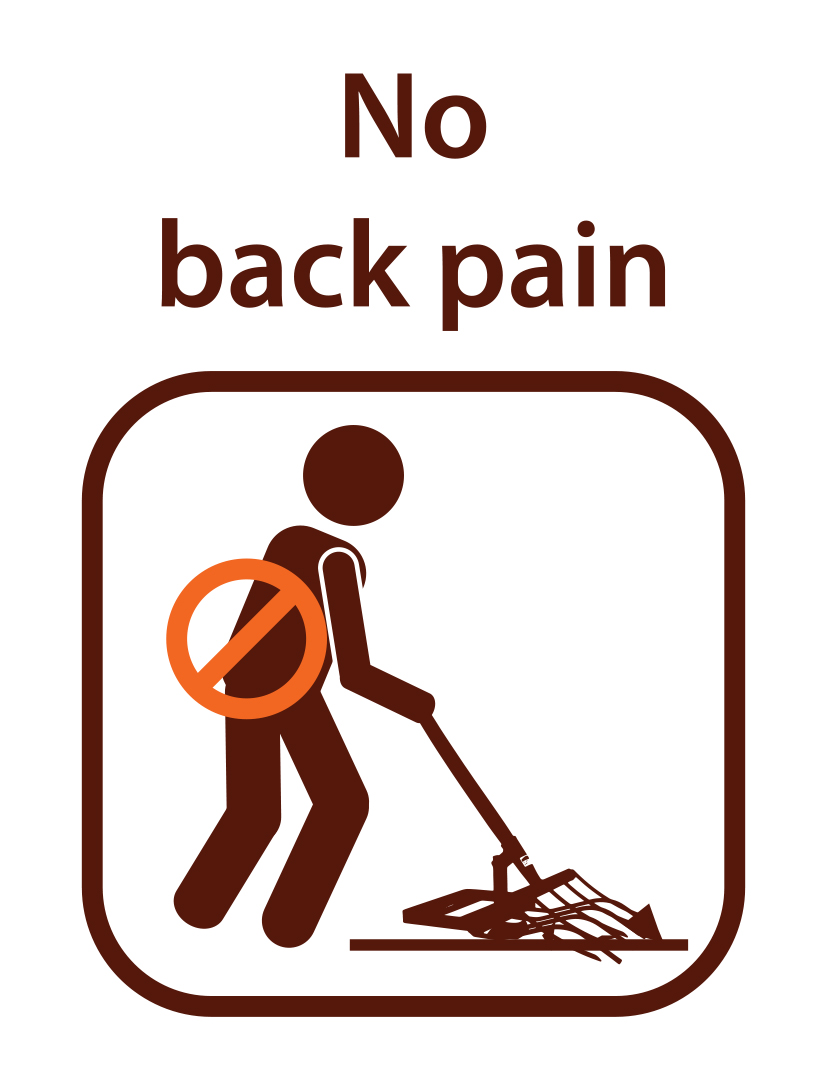
- Tilling the soil using a small garden cultivator
After you cleaned the garden of all weeds and aerated the soil using garden forks you make a finishing touch-up using small garden cultivators. With cultivators you will shallow cultivate, breaking up bigger chunks of soil and picking up any leftover weeds. By picking up weeds you will expose them to the surface of the soil which will lead them to dry out. Just watch out that you don’t cultivate too close to already seeded crops as you can damage the roots. And especially don’t cultivate the soil when it is wet as you can cause further compaction.
On our website, you can purchase small garden cultivators of different widths linked down below. You can also see their usage in the upper video.
Now that you know how to prepare your garden for spring you can look up how to seed different kinds of vegetables or flowers. If you want to make your job easier you can take a look at our website as we offer a variety of planters and seeders in different sizes and shapes.
